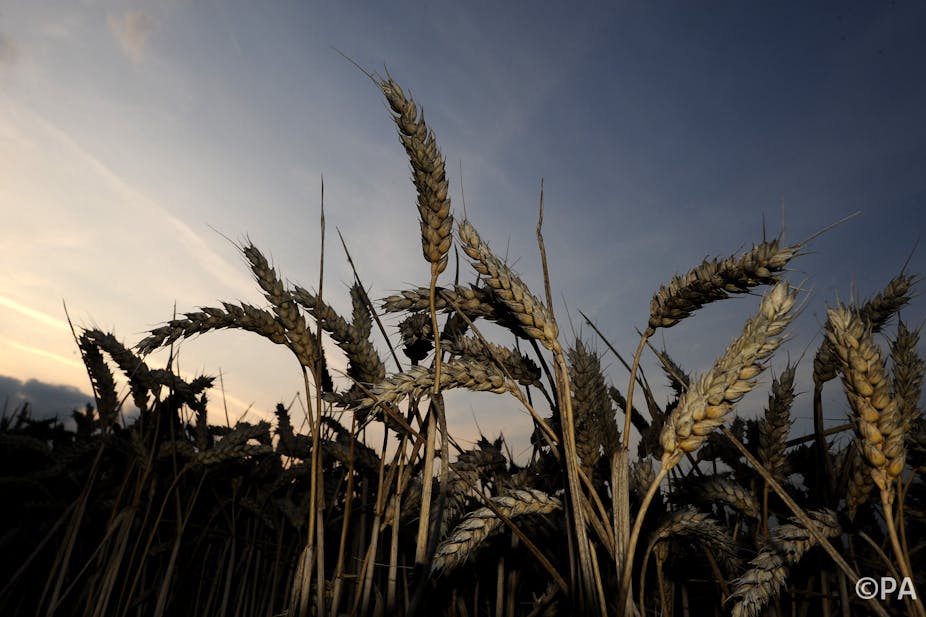The Green Revolution that began in the 1940s brought modern methods to farming through selective breeding, machinery, and agrochemicals. But 60 years on a new, more sustainable approach is required.
Published yesterday, the Food and Agriculture Organisation’s annual State of Food and Agriculture report called for better nutrition. It recommended diversifying crops and mixing crops, livestock, forestry and fishing. This step away from extensive, single crop farms is a key element of an agroecological approach, one that takes a step backward in order to move forward.
Unlike most conventional agriculture, agroecology seeks to combine the knowledge and experience of farmers with modern ecology and scientific insight. Farmers’ knowledge is crucial as a starting point for agroecological research and development. After all, local knowledge and indigenous farming techniques suited to the area often stem from hundreds of years of farming communities’ collective observation, trial and error. Good agroecologists value this and build on it, ensuring that farmers are active participants in new developments.
Current industrial farming practice tends to emphasise monocultures - large areas devoted to a single or small number of crops or livestock. By contrast, agroecology is centred on the idea that farms should mimic the functioning of natural ecosystems, harnessing natural biodiversity. For example, farming from forests (agroforestry), growing several crops next to each other, as they might grow naturally (polyculture), and using genetically diverse crops and livestock, or mixes of them.
There is an emphasis on re-use, creating closed loop systems. For example, in the mulberry grove-fishpond system of China’s Pearl River Delta, the leaves of the white mulberry tree are fed to silkworms, which produce silk. Compost from the mulberry tree and silkworm excrement are applied to the fishpond to feed the fish, and the excrement of the fish and other organic matter from the bottom mud is used as fertilizer for the trees. This circular system contains the nutrients and generates high yields.
Many of the drawbacks of conventional agriculture can be avoided. Waste is recycled and soils improved using carbon-capturing green manures and mulches. Water and nutrient loss is reduced, farming a mix of crops and animals produces a varied range of foods and protects the soil, and chemical fertilizers and pesticides are minimised. This helps drive down farmers’ costs and increase yields.
For example, 1.3 million Malawian smallholders have adopted agroforestry, using local nitrogen-fixing trees and shrubs to improve the soil and increase maize yields from one tonne per hectare to around three tonnes. A major study of 286 projects covering 37 million hectares in 57 countries found that, on average, crop yields increased by 79% with agroecological methods.
This approach breaks from the paradigm of industrial and Green Revolution agriculture, but also contrasts sharply from mainstream alternatives. Most “sustainable agriculture” and organic farming aims only to replace the use of agrochemicals - a manure or expensive commercial compost instead of fertilizer, or microbial pesticide instead of a toxin - without challenging the underlying crop monoculture.
Although this may be more environmentally benign, it leaves in place the immediate problems of industrial farming. Extensive monocultures suffer from genetic uniformity and rely heavily on machinery, pesticides, and fossil fuels. They are tied to large agribusiness corporations, and have very high capital costs. Poor farmers are caught in a debt trap, between rising prices of machinery, seeds, fertilizers and fuel, and the low prices food processors and supermarkets pay farmers. This “business as usual” approach assumes the planet has an endless supply of natural resources at one end, and a limitless capacity to absorb waste and pollution at the other.
In contrast, agroecological methods argue for a fundamental shift, from linear to circular farming that imitates natural ecosystems. Such a shift requires alternatives market structures for the farmers, so today agroecologists must consider the political economy of the entire food system. The farmer’s best means to avoid dependency is to carefully choose a mix of crops and products that between them can provide for soil fertility, crop protection, pollination, and water management. With recycling, clever clustering of industries, and localised production and consumption, this approach can scale from a single farm plot to whole cities.
Agroecology is developing now, through conversations and collaboration between researchers, farmers, and social movements promoting food sovereignty. In time it will fulfil the FAO’s call for better nutrition, give farmers and citizens direct control of their food, and create resilient local food systems worldwide.

